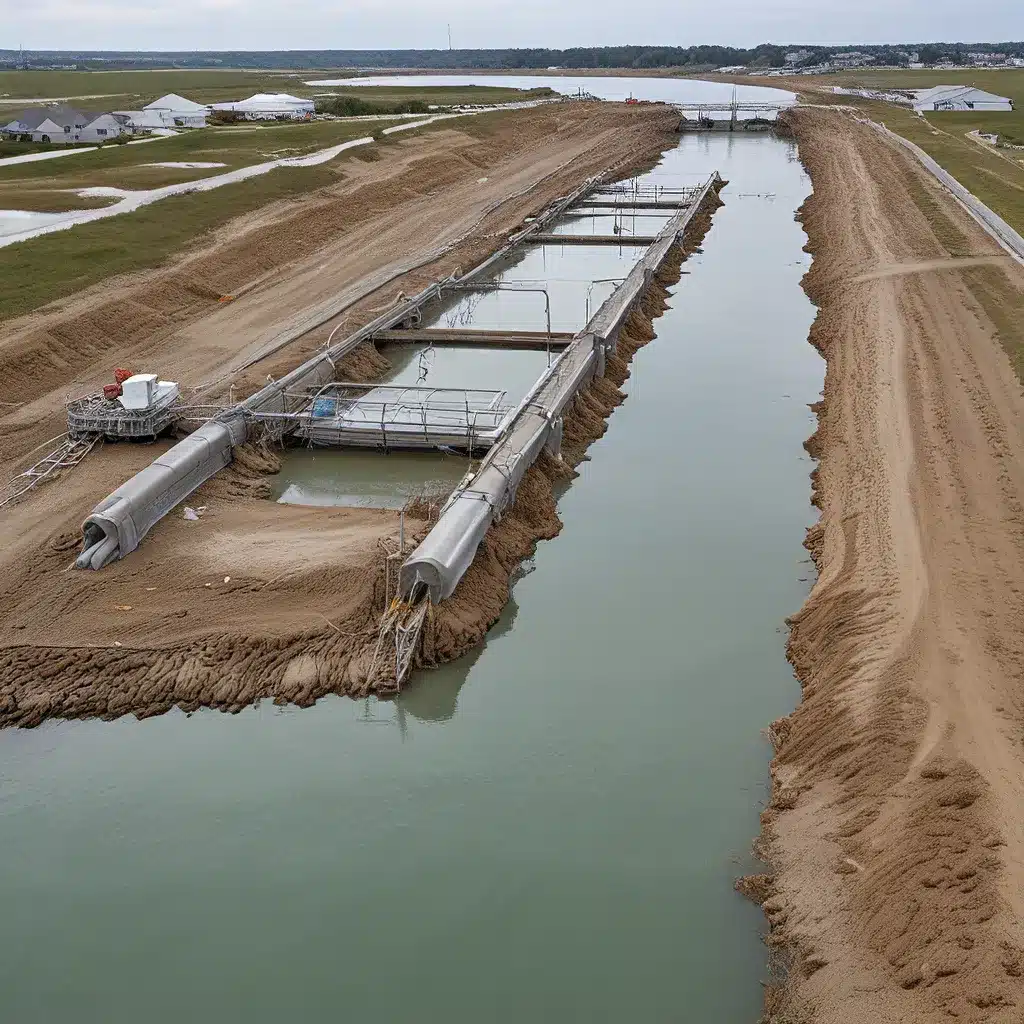
The Call of the Tides: Preparing for the Unexpected
As the waves crash against the shoreline, I can’t help but feel a sense of unease. The rhythmic ebb and flow of the tides, once so predictable, now seem to hold a foreboding message. Climate change, with its unpredictable storms and rising seas, has disrupted the natural order, leaving water treatment professionals like myself scrambling to adapt.
The EPA’s guidance on water utility adaptation has been a valuable resource, but the reality is that each community faces its own unique challenges. As the head of operations at Inland Waters Inc., a leading water treatment and environmental services provider, I’ve seen firsthand how the shifting tides of climate change can test the resilience of our systems.
Weathering the Storm: Protecting Critical Infrastructure
One of the greatest threats we face is the increasing frequency and intensity of extreme weather events. Hurricanes, floods, and even droughts can cripple our water infrastructure, leaving communities high and dry. To combat this, we’ve had to get creative.
Some of our facilities have implemented flood barriers like levees, dikes, and seawalls to safeguard critical equipment. Others have turned to innovative solutions like elevating pumps and placing them in waterproof containers. It’s all about anticipating the worst and being prepared to weather the storm.
But it’s not just about protecting our physical assets. We’ve also had to rethink our energy sources. Diversifying our energy portfolio with on-site renewable options like solar and wind has helped us reduce our vulnerability to power outages and ensure the continuity of our operations.
Riding the Waves of Uncertainty: Adapting Water Sources
As if the infrastructure challenges weren’t enough, we’ve also had to grapple with the shifting tides of water availability. Droughts, saltwater intrusion, and changing precipitation patterns have all taken a toll on our traditional water sources.
Diversifying our water sources has been a crucial strategy. We’ve explored the use of desalination, aquifer storage and recovery, and even water trading with neighboring utilities to ensure a reliable supply. It’s a delicate balancing act, but one that’s necessary to keep the taps flowing.
Navigating the Changing Tides: Improving Water Quality
But it’s not just about quantity; the quality of our water has also been a growing concern. Increased temperatures, eutrophication, and extreme weather events have all conspired to compromise the integrity of our water sources.
To address these challenges, we’ve invested in cutting-edge water treatment technologies and implemented rigorous monitoring protocols. Watershed management, green infrastructure, and innovative wastewater treatment processes have all been critical components of our strategy.
It’s a never-ending battle, but one that we’re committed to winning. After all, the health and well-being of our communities depend on it.
Charting a Course for the Future: Collaborative Resilience
As I look out over the churning waves, I can’t help but feel a sense of both trepidation and determination. The challenges we face are daunting, but I know that we’re not alone in this fight.
By working closely with local governments, regional stakeholders, and our peers in the water industry, we’ve been able to develop a comprehensive, collaborative approach to climate adaptation. Together, we’re charting a course for a more resilient future, one that can withstand the tidal shifts of a changing world.
It’s a long and arduous journey, but one that’s essential for the well-being of our communities. As the waves continue to crash against the shore, I’m reminded of the ongoing battle we face. But with determination, innovation, and a commitment to working together, I know that we can weather any storm.
So, let’s set sail on this new adventure, Inland Waters Inc. by our side, and navigate the tides of change with unwavering resilience. The future of our water systems depends on it.


